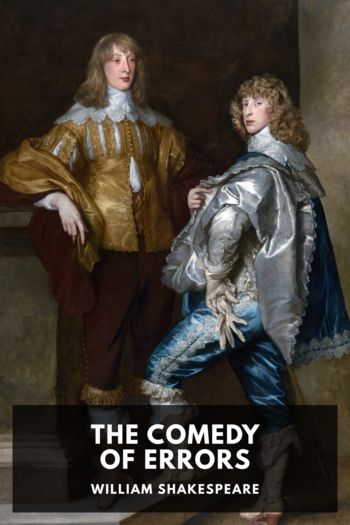The Life of Buffalo Bill William F. Cody (best ereader for academics .txt) 📖

- Author: William F. Cody
Book online «The Life of Buffalo Bill William F. Cody (best ereader for academics .txt) 📖». Author William F. Cody
The wagon master, in the language of the plains, was called the “bull-wagon boss”; the teamsters were known as “bull-whackers”; and the whole train was denominated a “bull-outfit.” Everything at that time was called an “outfit.” The men of the plains were always full of droll humor and exciting stories of their own experiences, and many an hour I spent in listening to the recitals of thrilling adventures and hair-breadth escapes.
Russell, Majors & Waddell had in their employ two hundred and fifty trains, composed of 6,250 wagons, 75,000 oxen, and about eight thousand men; their business reaching to all the government frontier posts in the north and west, to which they transported supplies, and they also carried freight as far south as New Mexico.
The trail to Salt Lake ran through Kansas to the northwest, crossing the Big Blue River, then over the Big and Little Sandy, coming into Nebraska near the Big Sandy. The next stream of any importance was the Little Blue, along which the trail ran for sixty miles; then crossed a range of sand-hills and struck the Platte River ten miles below Old Fort Kearney; thence the course lay up the South Platte to the old Ash Hollow Crossing, thence eighteen miles across to the North Platte—near the mouth of the Blue Water, where General Harney had his great battle in 1855 with the Sioux and Cheyenne Indians. From this point the North Platte was followed, passing Court House Rock, Chimney Rock and Scott’s Bluffs, and then on to Fort Laramie, where the Laramie River was crossed. Still following the North Platte for some considerable distance, the trail crossed this river at old Richard’s Bridge, and followed it up to the celebrated Red Buttes—crossing the Willow creeks to the Sweet Water, passing the great Independence Rock and the Devil’s gate, up to the Three Crossings of the Sweet Water, thence past the Cold Springs, where, three feet under the sod, on the hottest day of summer, ice can be found; thence to the Hot Springs and the Rocky Ridge, and through the Rocky Mountains and Echo Canyon, and thence on to the Great Salt Lake valley.
We had started on our trip with everything in good shape, following the above described trail. During the first week or two out, I became well acquainted with most of the train men, and with one in particular, who became a lifelong and intimate friend of mine. His real name was James B. Hickok; he afterwards became famous as “Wild Bill, the Scout of the Plains”—though why he was so called I never could ascertain—and from this time forward I shall refer to him by his popular nickname. He was ten years my senior—a tall, handsome, magnificently built and powerful young fellow, who could outrun, out-jump and outfight any man in the train. He was generally admitted to be the best man physically, in the employ of Russell, Majors & Waddell; and of his bravery there was not a doubt. General Custer, in his Life on the Plains, thus speaks of Wild Bill:
“Among the white scouts were numbered some of the most noted of their class. The most prominent man among them was ‘Wild Bill,’ whose highly varied career was made the subject of an illustrated sketch in one of the popular monthly periodicals a few years ago. ‘Wild Bill’ was a strange character, just the one which a novelist might gloat over. He was a plainsman in every sense of the word, yet unlike any other of his class. In person he was about six feet and one inch in height, straight as the straightest of the warriors whose implacable foe he was. He had broad shoulders, well-formed chest and limbs, and a face strikingly handsome; a sharp, clear blue eye, which stared you straight in the face when in conversation; a finely shaped nose, inclined to be aquiline; a well-turned mouth, with lips only partially concealed by a handsome moustache. His hair and complexion were those of the perfect blonde. The former was worn in uncut ringlets, falling carelessly over his powerfully formed shoulders. Add to this figure a costume blending the immaculate neatness of the dandy with the extravagant taste and style of the frontiersman, and you have Wild Bill. … Whether on foot or on horseback, he was one of the most perfect types of physical manhood I ever saw.
“Of his courage there could be no question; it had been brought to the test on too many occasions to admit of a doubt. His skill in the use of the pistol and rifle was unerring; while his deportment was exactly the opposite of what might be expected from a man of his surroundings. It was entirely free from all bluster or bravado. He seldom spoke himself unless requested to do so. His conversation, strange to say,





Comments (0)